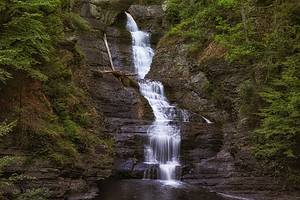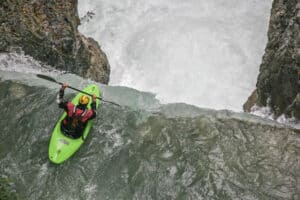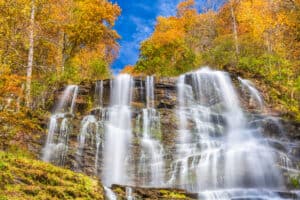South Carolina has a lot to offer nature lovers. From sandy shores to picturesque mountain terrains, there is something for everyone. And, then, there are the waterfalls! There are a whopping 100 waterfalls throughout the upcountry area. As a result, heading to one of these falls is top on the list of romantic things to do in the state. But, if one thing stands out, it’s the tallest waterfall in South Carolina, Raven Cliff Falls.
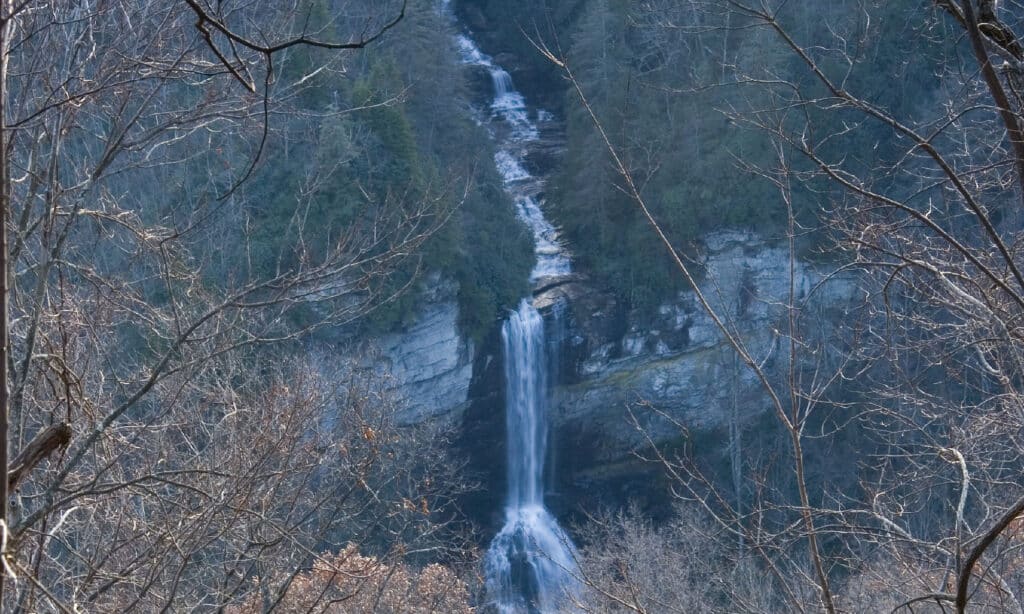
Raven Cliff Falls is the tallest waterfall in South Carolina.
©JOHN RAY UPCHURCH/Shutterstock.com
Raven Cliff Falls: the Tallest Waterfall in South Carolina
The tallest waterfall in South Carolina is a 400 feet tall drop from Matthews Creek into Dismal Creek, located in the Caesars Head State Park. This waterfall is one of the most photographed falls in the state. But it’s not just the cascading water that makes this spot unique. Raven Cliff Falls derived its name from the ravens that breed on the cliffs of the falls. In fact, there have been 150 raven species identified in this area.
The Difficulty of the Trail to Raven Cliff Falls
You can find the trail for Raven Cliff Falls at Caesars Head State Park. A big sign is pointing towards the trail in the Visitors Center parking lot. The trail is relatively easy for the first two miles before arriving at the fork for the loop. There are two choices at the fork; daring to go counterclockwise means a strenuous uphill return, so most people choose to go clockwise. Furthermore, the clockwise path takes you to the short spur trail, where the first overlook is located.
At this overlook, you realize the enormity of the drop, creating the tallest waterfall in South Carolina. The trail becomes more difficult as you enter the loop, but it’s worth it because you will arrive at the lookout point overlooking the middle of the falls. In total, the trail is 8.8 miles and rated difficult because of its steep slopes and length. Therefore, the Raven Cliff Falls trail is not for novice hikers. It is best to tackle this trail just after sunrise and pack loads of water and snacks. While it is a difficult hike, there is a lot of traffic on this trail, meaning there is a good chance you will share the road with other visitors.
Wildlife Around Raven Cliff Falls
As mentioned above, Raven Cliff Falls was named after the ravens that breed on the cliffs in the area, but they are not the only animals to call this park home. There are several species of wildlife that inhabit areas around the falls. They include:
Black Bear
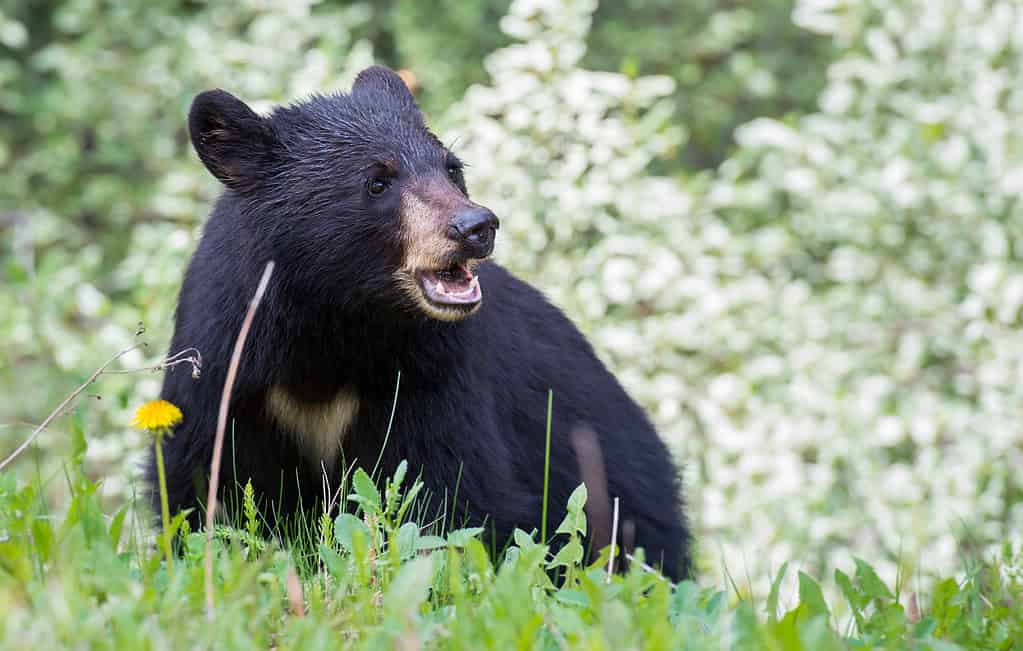
Black bears have rounded ears that sit on a broad head.
©Ghost Bear/Shutterstock.com
The largest land mammal in South Carolina is the black bear. Their thick, long fur varies in color but is primarily dark brown or black with light brown snouts. In addition, black bears have rounded ears that sit on a broad head. They are easily distinguished from Grizzly and brown bears because they don’t have a prominent should hump. Furthermore, these bears have an incredible sense of smell and fantastic eyesight. They are very adaptable and found in various habitats, usually close to the water as they love to swim, but they are also excellent climbers.
Average Size
Black bear males are typically bigger than females, averaging between 150 to 350 pounds, while the female’s weight ranges from 100 to 250 pounds. However, older black bears can reach between 400 to 500 pounds if they have access to a lot of food. In fact, the largest black bear ever recorded in South Carolina weighed a whopping 600 pounds!
Life Expectancy
Black bears have a long lifespan because they only reach sexual maturity by 3 and are fully grown by 5. Therefore, their average lifespan in the wild is 18 years.
Peregrine Falcon
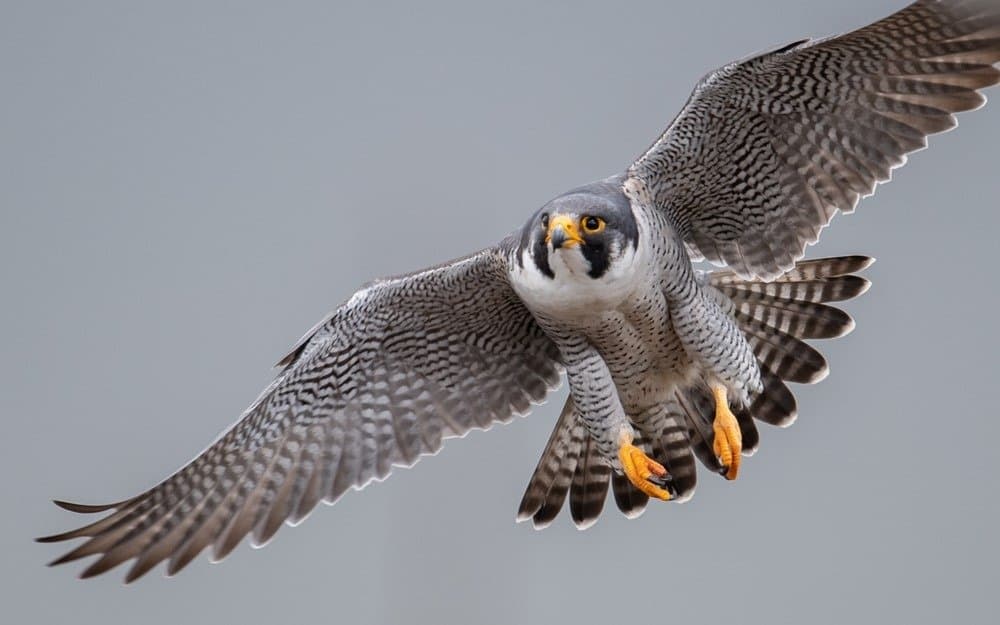
Peregrine falcons are one of the fastest animals in the world and can reach speeds of 200 miles per hour when diving.
©Harry Collins Photography/Shutterstock.com
The peregrine falcon is mainly seen in South Carolina during winter or when they migrate. One of their most successful nesting areas in the state is at Table Rock State Park. These falcons primarily feed on other birds, which they hunt in midair. Furthermore, they are one of the fastest animals in the world and can reach speeds of 200 miles per hour when diving.
Peregrine Falcon Population and Threats
Unfortunately, the peregrine falcon population declined significantly during the 50s and 60s because of the high pesticide use during that time frame. While the pesticides didn’t affect these birds of prey directly, it accumulates in the tissues of small animals, like mammals and birds, but only in low doses, so it didn’t harm the animal. However, when peregrine falcons consume enough of these contaminated animals, the pesticides can reach dangerous levels.
DDT was the main culprit for the decline of peregrine falcons, as it was responsible for thinning their eggshells, causing them to break during incubation. Luckily, the use of this pesticide was banned in the USA, and other pesticides are closely monitored. But, sadly, when these falcons migrate for winter, they may select other countries where pesticide use is not regulated. So while peregrine falcons were listed as Endangered, their population size is making a comeback, and the IUCN has listed them as a Least Concern.
Green Salamander
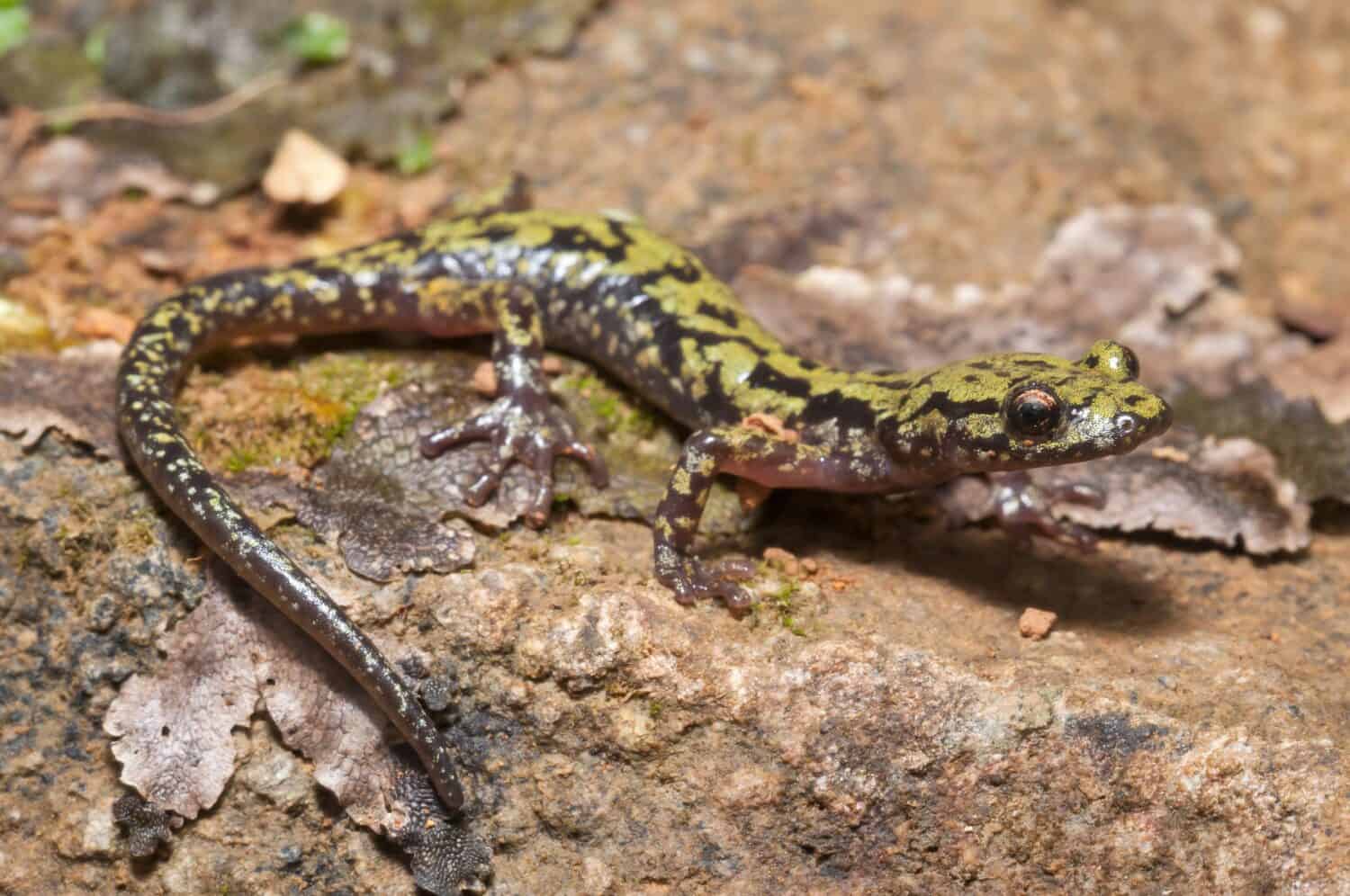
Green salamanders and other species, such as dwarf salamanders, live around South Carolina.
©Mike Wilhelm/Shutterstock.com
The tallest waterfall in South Carolina is home to the green salamander. These salamanders spend most of their time beneath the ground, under logs, leaves, and rocks. However, some prefer to inhabit aquatic environments. There are several other species of salamanders that occur around the falls, like dwarf salamanders. They resemble lizards but have moist skin in place of scales.
Rainbow Trout
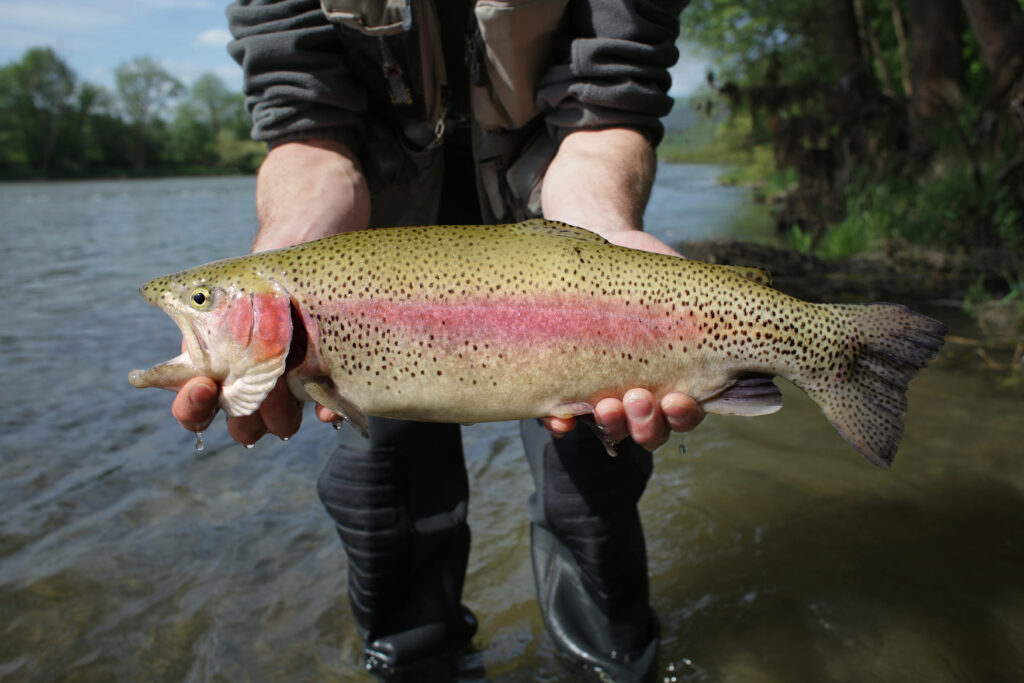
Rainbow trout live around Raven Cliff Falls and in the mountain streams of Greenville, Pickens, and Oconee counties.
©pictoplay/Shutterstock.com
The rainbow trout are known for their various colors. For example, they are elongated fish with green sides that fades below the dorsal fin to yellow and then white. In addition, they have reddish-pink stripes that run along the sides of their bodies and small dark spots on most of their fins, body, and head.
Range
Besides Raven Cliff Falls, these fish can also occur in the mountain streams of Greenville, Pickens, and Oconee counties. Furthermore, they inhabit Lake Hartwell, Murray, and Jocassee.
Size
- Average size: four to five ounces
- Average length: seven to eight inches
- South Carolina Record: 11 pounds, 5 ounces
Life Expectancy
The rainbow trout’s average life expectancy is around 11 years in the wild.
Preferred Habitat
Rainbow trout prefer to inhabit cold waters, not higher than 68 degrees Fahrenheit. They like clear water in reservoirs, creeks, rivers, and lakes. Additionally, when they occur in mountain stream habitats, they prefer faster-moving waters, like at the head of a pool.
Red-tailed Hawk
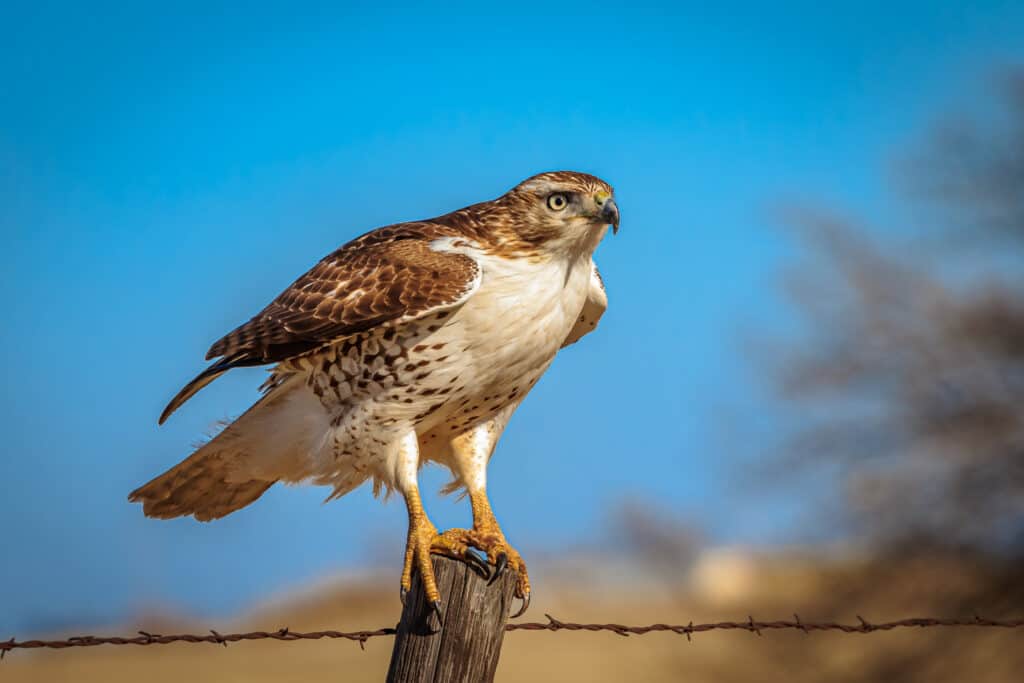
Juvenile red-tailed hawks look exactly like the adults, with one exception: their plumage. For example, their tails are typically tan with black stripes, while adults have rusty-colored tails.
©Richard G Smith/Shutterstock.com
The red-tailed hawk is also known as a rabbit hawk or hen hawk in South Carolina. In addition, they are medium-sized birds of prey, reaching 46 to 64 inches in length, with a wingspan of four feet. Red-tailed hawks have dark brown plumage with white feathers underneath. Their bellies have brown streaks, and their tails are a red, rusty color. However, this species has two variations of coloration: light and dark phases.
Juvenile red-tailed hawks look exactly like the adults, with one exception, their plumage. For example, their tails are typically tan with black stripes, while adults have rusty-colored tails. In addition, they are distinguished from red-shouldered and broad-winged hawks by their build, as they are stockier and have rounder and broader wings.
Where is Raven Cliff Falls Located on a Map?
If you’re coming from Travelers Rest, simply drive north on Highway 276 for approximately 1.1 miles beyond the visitor center. You’ll spot the Raven Cliff Falls parking area on your right-hand side, providing convenient access to this scenic attraction.
The photo featured at the top of this post is © D Griffin/Shutterstock.com
Thank you for reading! Have some feedback for us? Contact the AZ Animals editorial team.



